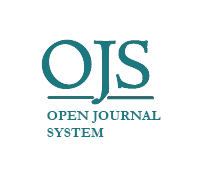Liquidity Risk And Basel III Implementation In Southeast Asia Banking
DOI:
https://doi.org/10.22219/jrak.v13i2.25135Keywords:
Bank Accounting, BASEL III, Liquidity, Net Stable Funding RatioAbstract
Purpose: The objective of this study was to determine the effect of liquidity coverage ratio, net stable funding ratio, net interest margin, and cost of funds on return on assets in Southeast Asian countries' banking services.
Methodology/approach: This research was a quantitative research method. Secondary data was used and collected from stock exchanges in each country. Samples were banks in Indonesia, Malaysia, Cambodia, Philippines, Singapore and Thailand. The data testing technique uses multiple linear regression analysis.
Findings: The study inform that net stable funding ratio, liquidity coverage ratio, net interest margin and cost of funds have a significant effect on return on assets.
Practical implications: The practical implications were BASEL III implementation to manage liquidity risk and capital in each country have successfully and encourage compliance with bank liquidity and capital aspects according to the framework of BASEL III to enhance the financial performance of banks in Southeast Asian countries.
Originality/value: Research on the application of BASEL III in Southeast Asian Countries as a framework that establishes international standards for bank capital adequacy, stress testing, and liquidity requirements is the originality of this research.
Downloads
References
Bhati, S., Zoysa, A. D., & Jitaree, W. (2019). Factors Affecting the Liquidity of Commercial Banks in India: a Longitudinal Analysis. Banks and Bank Systems, 14(4), 78-88. https://doi.org/http://dx.doi.org/10.21511/bbs.14(4).2019.08.
Bilal, Z. O., & Salim, B. F. (2016). Does Basil III Implementation Impact on Financial Performance? Evidence from Omani's Commercial Banks. International Journal of Economics and Financial Issues, 6(3), 963-971. https://dergipark.org.tr/tr/ download/article-file/364820.
Boora, K. K., & Kavita. (2018). The Impact of Basel III Norms on Profitability: An Empirical Study of Indian Public Sector Banks. IUP Journal of Financial Risk Management, 15(3), 44-58. https://www.proquest.com/openview/ 073114817e7dc8bdfc2ecbc576d2e161/1?pq-origsite=gscholar&cbl=54459.
Calomiris, C. W., Heider, F., & Hoerova, M. (2015). Theory of Bank Liquidity Requirements. Characteristics on Eve of Liquidity Coverage Ratio Application - The Case of the Czech Republic. Columbia Business School Research Paper No. 14-39. https://doi.org/https://doi.org/10.2139/ssrn.2477101.
Douglas W. D, Raghuram G. R (2002) A Theory of Bank Capital, The Journal of Finance, 55(6), 2431-2465, https://doi.org/10.1111/0022-1082.00296
Fibriyanti, Y. V., & Nurcholidah, L. (2020). Pengaruh CAR, NPL, NIM, BOPO Dan LDR Terhadap Profitabilitas Bank Umum Swasta Nasional Devisa. Jurnal Sains Sosio Humaniora, 4(2), 344-350. https://doi.org/https://doi.org/10.22437/ jssh.v4i2.10863.
FSI. (2019). Financial Stability Institute. Bank for International Settlements. https://www.bis.org/fsi/fsisummaries/nsfr.pdf.
Ghozali, I. (2018). Aplikasi Analisis Multivariate dengan Program IBM SPSS 23 Update PLS Regresi. Badan Penerbit Universitas Diponegoro.
Giordana, G. A., & Schumacher, I. (2017). An Empirical Study on the Impact of Basel III Standards on Banks Default Risk: The Case of Luxembourg. Journal of Risk and Financial Management, 10(2), 1-21. https://doi.org/https://doi.org/ 10.3390/jrfm10020008.
Golubeva, O., Golubeva, O., Duljic, M., & Keminen, R. (2019). The Impact of Liquidity Risk on Bank Profitability: Some Empirical Evidence From The European Banks Following The Introduction of Basel III Regulations. Journal of Accounting and Management Information Systems, 18(4), 455-485. https://doi.org/https://doi.org/ 10.24818 /jamis.2019.04001.
Hamdy, A., Zaky, M., & Soliman, M. M. (2017). The impact of announcement of Basel III on the banking system performance: an empirical research on Egyptian Banking Sector. The Business and Management Review, 9(2), 165-175. https://cberuk.com/cdn/conference_proceedings/conference_56239.pdf.
Hasan, R., & Zayed, N. M. (2018). The New Basel-III Capital Accord: Capability Of The Banks In Adapting And Adopting The New Regime In Bangladesh. International Journal of Development Research, 8(9), 22782-22791. www.journalijdr.com.
Johnson, L. N. (2022). Basel III in Sierra Leone: Delivering on it. Journal of Economics & Management Research, 3(4), 1-4. https://doi.org/https://doi.org/10.47363/ JESMR/2022(3)155.
Khalifaturofi'ah, S. O. (2021). Cost Efficiency, Innovation and Financial Performance of Banks in Indonesia. Journal of Economic and Administrative Sciences, ahead-of-print(ahead-of-print). https://doi.org/https://doi.org/10.1108/JEAS-07-2020-0124.
Kiptoo, S. K., & Maniagi, G. (2020). Influence of liquidity regulation on financial performance of Commercial Banks in Kenya. The Strategic Journal of Business & Change Management, 7(4), 86-96. https://doi.org/https://strategicjournals.com/ index.php/journal/article/view/1778.
Magdalena, A., Marpaung, B. S., & Indira. (2019). The Effects Of Bank Funds Sources On Bank Profitability In Indonesian Stock Exchange. Riset: Jurnal Aplikasi Ekonomi Akuntansi dan Bisnis, 1(2), 90-98. https://doi.org/https:// doi.org/ 10.35212/riset.v1i2.23.
Maria, P., & Georgoulea Eleftheria. (2016). The Impact of Basel III Indexes of Leverage and Liquidity CRDIV/CRR on Bank Performance: Evidence from Greek Banks Journal of Economics and Business, 66(2), 79-107. http://hdl.handle.net/10419/169179.
Mashamba, T. (2018). The Effects of Basel III Liquidity Regulations on Banks' Profitability. Journal of Governance & Regulation, 7(2), 34-48. https://doi.org/http://doi.org/ 10.22495/jgr_v7_i2_p4.
Merchant, K. A., & White, L. F. (2017). Linking the Ethics and Management Control Literatures. Advances in Management Accounting, 28(1), 1-29. https://doi.org/https://doi.org/10.1108/S1474-787120170000028001.
Myers, Steward C. (1984). Capital Structure Puzzle. The Journal of Finance, 39(3), 574-592. https://doi.org/10.1111/j.1540-6261.1984.tb03646.x
Nisa, R., & Darzi, M. A. (2018). Impact of Basel-III Implementation on Profitability of Banks. International Journal of Commerce and Management, 4(5), 101-109. http://www.managejournal.com/archives/2018/vol4/issue5
Nufus, H., & Munanda, A. (2021). Analisis Pengaruh CAR Dan NIM Terhadap ROA Pada PT Bank Muamalat Indonesia Tbk. JUrnal Disrupsi Bisnis, 4(6), 497-504. https://doi.org/http://dx.doi.org/10.32493/drb.v4i6.12753
Obadire, Moyo, & Munzhelele. (2022). Basel III Capital Regulations and Bank Efficiency: Evidence from Selected African Countries. International Journal of Financial Studies, 10(3), 57. https://doi.org/https://doi.org/10.3390/ijfs10030057
Ozili, P. K. (2021). Basel III in Africa: Making It Work CBN Bullion, 45(1), 16-23. https://www.researchgate.net/publication/353913531_Basel_III_in_Nigeria_making_it_work
Rahman, A. A., Markom, R., & Rashid, U. S. A. (2018). The Regulatory Framework on Liquidity Risk Management of Islamic Banking In Malaysia. International Journal of Business and Society, 19(S3), 332-352. http://www.ijbs.unimas.my/ images/repository/pdf/Vol19-S3-paper1.pdf
Rakshit, B., & Bardhan, S. (2022). Does Bank Efficiency Enhance Bank Performance? Empirical Evidence from Indian Banking. Bulletin of Monetary Economics and Banking, 25(Special 1), 103-124. https://doi.org/https://doi.org/10.21098/ bemp.v25i0.1844.
Ramchandani, Bist, K. a., & Singh, S. (2021). Impact of Cost of Funds on Bank Profitability: Evidence from Scheduled Commercial Banks of India. Empirical Economics Letters, 20(special Issue 1), 1-7. https://ssrn.com/abstract=3994327
Santika, E., Fakhrughozy, M. H., Nur, W. M., & Lestari, H. S. (2022). Effect of operational risk on financial performance in banking industry IDX Jurnal Ekonomi, XXVII(01), 123-137. https://doi.org/http://dx.doi.org/10.24912/je.v27i1.915
Setiyono, B., & Naufa, A. M. (2021). The Impact of Net Stable Funding Ratio on Bank Performance and Risk Around The World. Buletin Ekonomi Moneter dan Perbankan, 23(4), 543-564. https://doi.org/https://doi.org/10.21098/bemp.v23i4.1166.
Shah, S. Q. A., Lai, F.-W., Shad, M. K., Malik, M., & Sadriwala, K. F. (2022). Basel III and Firm Performance: A Lens of Managerial Ownership. Eurasian Business and Economics Perspectives, 1(1). https://www.springerprofessional.de/en/understanding-student-learning-gain-using-student-staff-partners/23596742.
Sidhu, A. V., Rastogi, S., Gupte, R., Rawal, A., & Agarwal, B. (2022). Net Stable Funding Ratio (NSFR) and Bank Performance: A Study of the Indian Banks. Risk Financial Management Journal, 15(11), 527. https://doi.org/ https://doi.org/ 10.3390/jrfm15110527
Zainudin, S. M., Rasid, S. Z. A., Omar, R., & Hassan, R. (2019). The Good and Bad News about the New Liquidity Rules of Basel III in Islamic Banking of Malaysia. Journal of Risk and Financial Management, 12(3), 120. https://doi.org/https:// doi.org/10.3390/jrfm12030120
Downloads
Published
Issue
Section
License
Copyright (c) 2023 Nanang Shonhadji, Ali Subiyanto, Soni Agus Irwandi

This work is licensed under a Creative Commons Attribution-NonCommercial-ShareAlike 4.0 International License.

Jurnal Reviu Akuntansi dan Keuangan is licensed under a Creative Commons Attribution-NonCommercial-ShareAlike 4.0 International License.
Authors who publish with this journal agree to the following terms:
- Authors retain copyright and grant the journal right of first publication with the work simultaneously licensed under a Creative Commons Attribution-NonCommercial-ShareAlike 4.0 International License that allows others to share the work with an acknowledgement of the work's authorship and initial publication in this journal.
- Authors are able to enter into separate, additional contractual arrangements for the non-exclusive distribution of the journal's published version of the work (e.g., post it to an institutional repository or publish it in a book), with an acknowledgement of its initial publication in this journal.
- Authors are permitted and encouraged to post their work online (e.g., in institutional repositories or on their website) prior to and during the submission process, as it can lead to productive exchanges, as well as earlier and greater citation of published work (See The Effect of Open Access).










